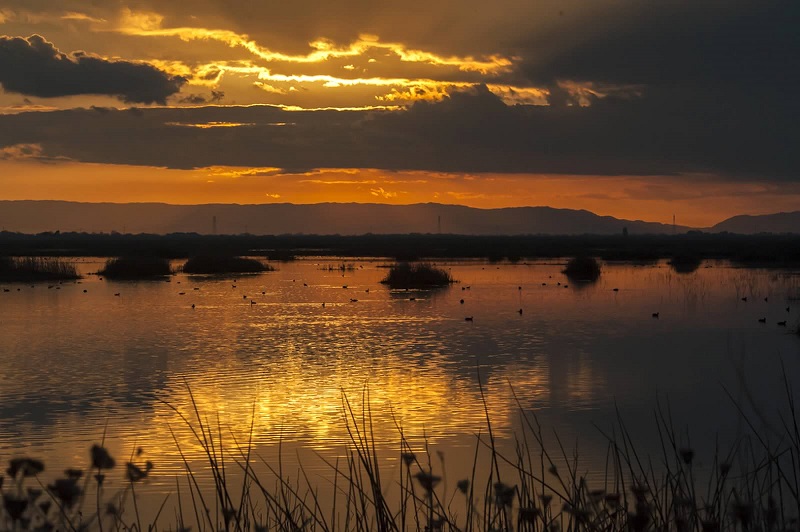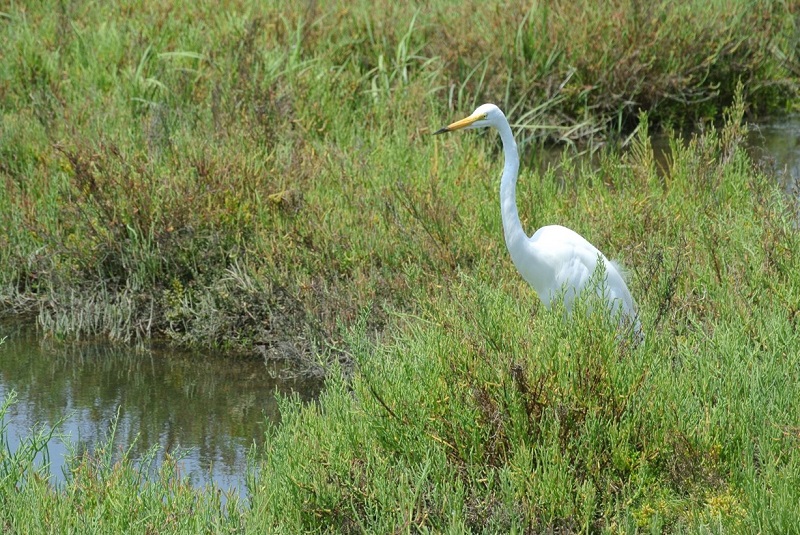Every year World Wetlands Day is celebrated on February 2nd, marking the date in 1971 in which the Convention on Wetlands was adopted in Ramsar, Iran. The Convention on Wetlands is an intergovernmental treaty that outlines the importance of wetlands and provides a framework on how to preserve and sustainably use these precious lands around the world. Wetlands are a crucial part of our environment as they store fresh water for our consumption and are a habitat or breeding ground for 40% of the world’s species. Important agricultural, environmental, recreational, and economical services are also provided by wetlands all over the globe.
Wetlands are defined as lands that are near or under the water for at least part of the year, such as estuaries, saltmarshes, and mangroves. They can contain fresh or salt water and are home to plants and animals that are specially adapted to life in an aquatic environment. In California only about 5% of our wetlands remain, largely due to the fact that they have historically been destroyed for agricultural or urbanization purposes. Since many wetlands are reliant on high groundwater levels, climate change also poses a significant threat to these valuable lands.

Sunset at Yolo Wildlife Area. CDFW photo by Bob Sahara.
This year’s theme for World Wetlands Day is “Wetlands and Water,” which is fitting being as these important ecosystems store most of the world’s fresh water. Wetlands play a large role in filtering pollutants and providing fresh water that we can drink or use to irrigate crops. With a global consumption of 10 billion tons of water per day, the stress placed on wetlands is high.
Another primary function of wetlands is flood control. When extreme weather events occur, wetlands act as shock absorbers and help protect surrounding areas from flooding. In fact, each acre of wetland can absorb up to 1.5 million gallons of floodwater! These lands also store large amounts of carbon, which helps regulate the climate and lessen the severity of climate change.

Great egret (Ardea alba) hunting at Bolsa Chica Ecological Reserve. CDFW photo by Kirsten Macintyre.
Agriculturally, wetlands are important spaces for rice paddies and other forms of farming; 3.5 billion people rely on rice paddies for food annually. Aquaculture is also an important factor of wetlands. Shrimp, clams, fish, and many other aquatic organisms are grown in wetlands to help reduce overfishing in oceans and meet our increasing global demand for food. In 2016, approximately 30% of fish production was through inland aquaculture.
Of course, wetlands are also important recreational spaces for birdwatching, photography, hunting, walking, or simply enjoying the beauty of nature. We must preserve these valuable wetlands by doing what we can to conserve water, address pollution, and raise awareness on the importance of these lands. We encourage you to visit your local wetlands with a newfound appreciation and keep an eye out for any native wildlife. If you happen to spot a rare species, be sure to report your observation through our Online Field Survey Form!
For more information on World Wetlands Day and how to get involved, please visit the  Official World Wetlands Day website.
Official World Wetlands Day website.